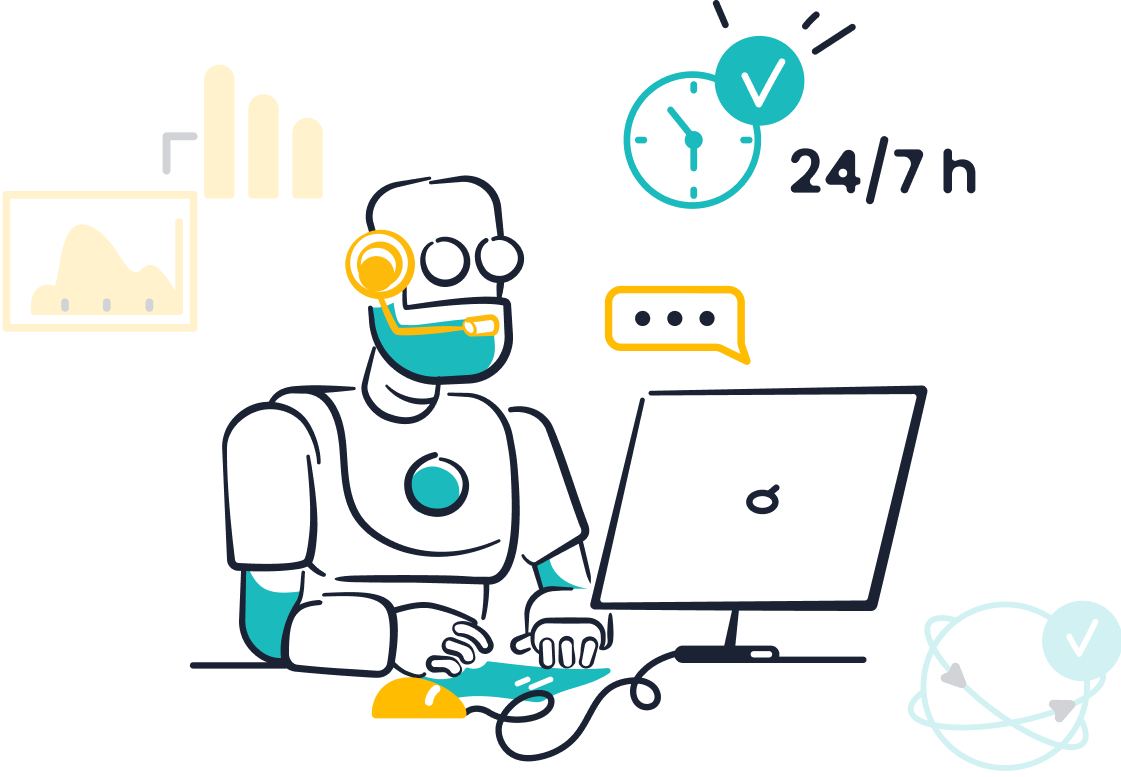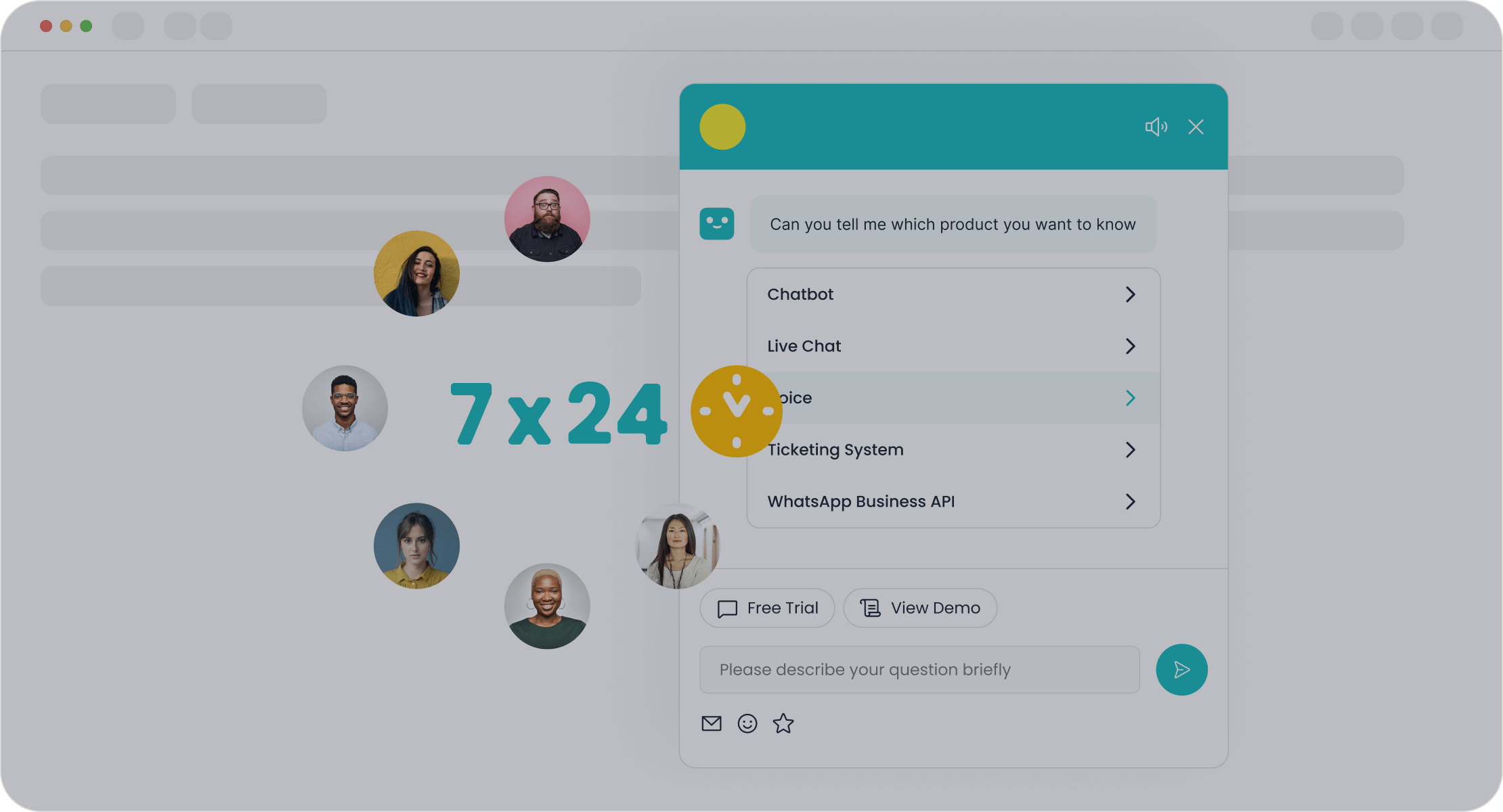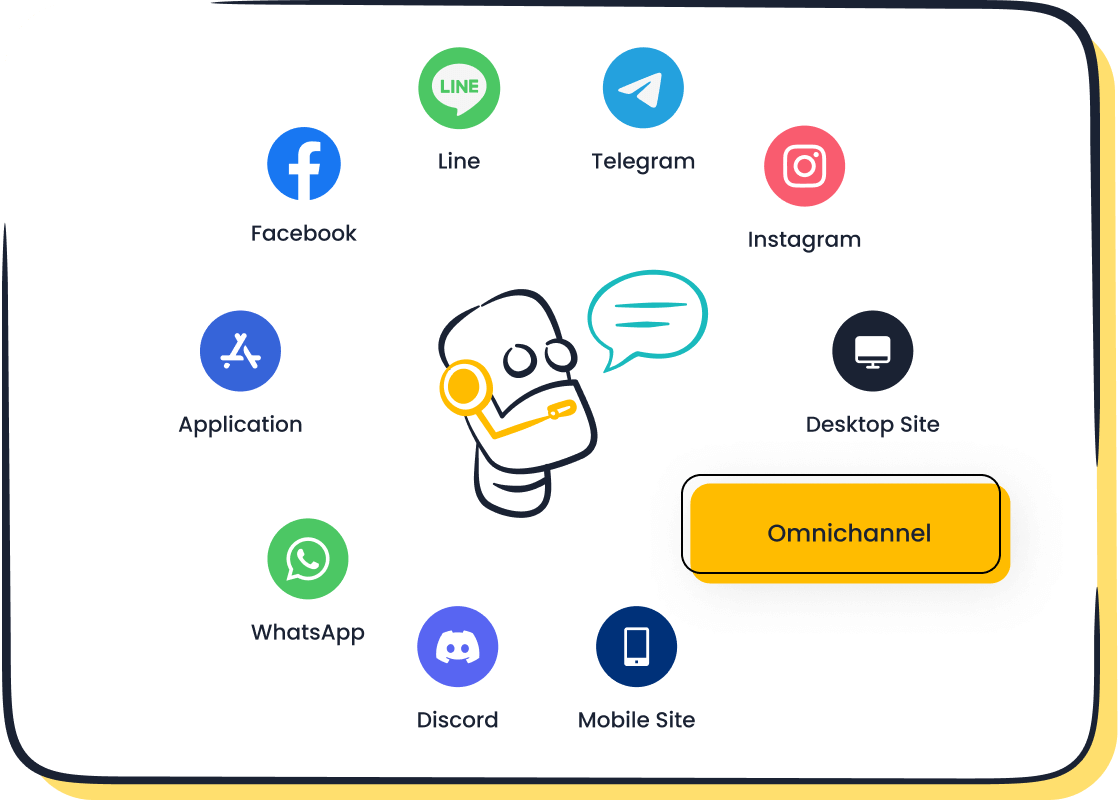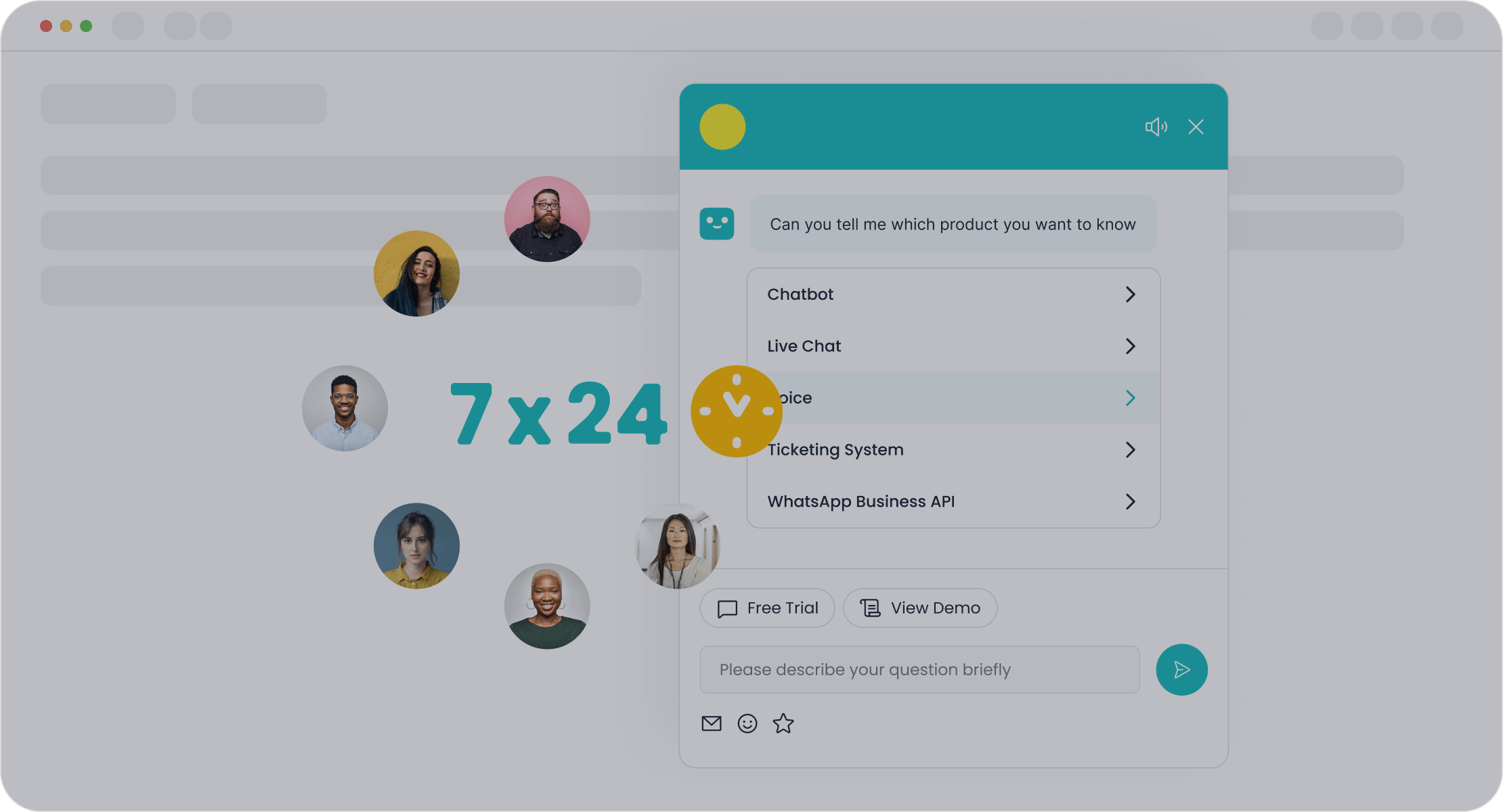Top Features of Customer Service Automation Solutions in 2025

In 2025, automating customer service has become a necessity for businesses aiming to meet rising customer expectations. Customers now demand faster, more personalized interactions, and automation plays a key role in delivering these experiences. Studies reveal that customers with positive experiences spend 140% more than those with negative ones, while 74% of satisfied customers remain loyal for over a year. Automation not only enhances efficiency but also enables businesses to analyze customer interactions and identify areas for improvement. Sobot, a leader in customer service automation, empowers businesses to achieve these goals through innovative solutions like AI-driven chatbots and omnichannel platforms.
The Evolving Landscape of Customer Service Automation
Rising Customer Expectations for Instant and Personalized Support
Customers today expect faster and more tailored interactions. Businesses that fail to meet these expectations risk losing a significant portion of their clientele. For instance, 40% of consumers stop doing business after a negative interaction, and this figure rises to 43% among Gen X customers. Moreover, 87% of consumers now demand personalized interactions, while 79% expect companies to anticipate their needs. These statistics highlight the growing importance of automating customer service to deliver instant and customized support.


Automation tools like Sobot's AI-driven chatbot address these demands effectively. By offering 24/7 availability and multilingual support, the chatbot ensures customers receive timely responses in their preferred language. Its ability to handle repetitive queries autonomously allows human agents to focus on complex issues, enhancing overall service quality. This approach not only meets customer expectations but also fosters loyalty and satisfaction.
The Need for Scalable and Cost-Effective Automation Solutions
As businesses grow, the volume of customer interactions increases. Managing this surge without scalable solutions can lead to inefficiencies and higher costs. Automation tools provide a cost-effective way to handle these challenges. They reduce the need for human involvement in routine tasks, optimize workforce allocation, and minimize errors. For example, Sobot's omnichannel solution integrates AI-driven automation to streamline operations, enabling businesses to scale without proportional cost increases.
Automation also enhances team morale by eliminating repetitive tasks, allowing employees to focus on strategic activities. This shift not only improves job satisfaction but also boosts productivity. Additionally, automation frameworks can adapt to changing project needs, ensuring long-term financial benefits. By investing in scalable automation tools, businesses can achieve sustainable growth while maintaining high service standards.
How Sobot’s Omnichannel Solution Addresses Modern Challenges
Sobot’s omnichannel solution is a game-changer in customer service automation. It consolidates customer interactions across multiple channels into a unified workspace, ensuring seamless communication. This integration eliminates data silos, allowing agents to access comprehensive customer information in real time. The result is faster response times and more personalized service.
The solution also incorporates advanced analytics to provide actionable insights. Businesses can monitor performance, identify bottlenecks, and optimize operations. For example, Sobot’s platform supports proactive workload management, enhancing productivity by 30%. Its AI-driven chatbots handle repetitive queries, freeing agents to tackle complex issues. This approach not only improves efficiency but also elevates customer satisfaction.
By leveraging Sobot’s omnichannel solution, businesses can address modern challenges effectively. The platform’s scalability, cost-efficiency, and focus on personalization make it an essential tool for automating customer service in 2025.
AI-Driven Personalization in Customer Service

Definition and Benefits of AI Chatbots in Automating Customer Service
AI chatbots have revolutionized customer service automation by delivering personalized interactions at scale. These intelligent tools analyze customer data to understand preferences, behaviors, and needs. This allows businesses to offer tailored solutions and recommendations instantly. Unlike traditional methods, AI-powered customer service ensures consistency and accuracy across all touchpoints.
The benefits of AI chatbots are immense. They operate 24/7, providing instant responses to customer queries. This reduces wait times and enhances satisfaction. For example, 74% of customers prefer chatbots for simple questions, while 69% value their ability to deliver instant responses. Businesses also benefit from reduced operational costs, as chatbots handle repetitive tasks, freeing agents to focus on complex issues. Companies like Humana and WeightWatchers have reported significant improvements, including a 60% reduction in response times and a 70% resolution rate, respectively.
How Sobot’s Chatbot Enhances Personalization and Efficiency

Sobot’s AI chatbot takes personalization and customization options to the next level. It uses advanced algorithms to analyze customer interactions and provide tailored solutions. With multilingual support and a no-coding-required setup, it ensures accessibility for businesses of all sizes. The chatbot’s ability to triage queries autonomously improves agent efficiency by 30%, while its correct answers rate of 80% ensures high-quality service.
The chatbot also excels in delivering personalized interactions. By leveraging a knowledge base built from various sources, it provides accurate and context-aware responses. This approach not only enhances customer satisfaction but also boosts conversions by 20%. Sobot’s chatbot integrates seamlessly with omnichannel platforms, ensuring consistent experiences across all communication channels. Its real-time reporting and optimization features further enhance operational efficiency, making it a valuable tool for automating customer service.
Real-World Applications of AI-Powered Personalization
AI-powered customer service has transformed industries by enabling businesses to deliver personalized experiences. For instance, Bank of America’s Erica chatbot offers tailored financial advice, while Spotify’s chatbot enhances user satisfaction with playlist management. In healthcare, Babylon Health’s AI chatbot provides initial consultations, improving access to care.
Emails with personalized subject lines are 26% more likely to be opened, and segmented campaigns can increase email revenue by 760%. These examples highlight the power of AI in driving customer engagement and loyalty. Sobot’s solutions, like its AI chatbot, empower businesses to replicate these successes by offering tailored interactions and proactive support. Whether in retail, finance, or healthcare, AI-powered personalization ensures consistently high-quality customer experiences.
Omnichannel Support for Seamless Customer Experiences

What Is Omnichannel Support in Customer Service Automation?
Omnichannel support refers to the ability of businesses to provide seamless and consistent customer experiences across multiple communication channels. Whether customers interact via email, social media, live chat, or phone, omnichannel support ensures that their journey remains uninterrupted and personalized. This approach is essential in today’s digital landscape, where 62% of customers prefer engaging with brands through multiple digital channels. Moreover, companies with strong omnichannel engagement retain 89% of their customers, compared to just 33% for those with weak engagement.
Omnichannel initiatives also drive tangible business outcomes. For instance, brands using at least three channels see a 287% increase in purchase rates. These statistics highlight the importance of integrating omnichannel strategies into automating customer service to meet modern customer expectations.

Benefits of Unified Customer Interactions Across Channels
Unified customer interactions offer several advantages that enhance both customer satisfaction and operational efficiency. By consolidating customer data across channels, businesses can reduce redundancy and save resources. Faster responses and resolutions improve the overall customer experience, while streamlined communication across teams boosts internal collaboration.
- Enhanced Customer Experience: Consistent information across channels leads to higher satisfaction.
- Increased Operational Efficiency: Streamlined processes allow for quicker responses and lower costs.
- Improved Data Management: Better integration of interactions enhances decision-making.
“By moving toward unified customer interactions, companies can improve engagement and gain operational efficiencies, leading to cost savings and better service delivery.”
Unified customer experience management also strengthens brand identity. It ensures consistent messaging across channels, which builds trust and fosters loyalty. This approach not only improves customer experiences but also enhances personalization, a key factor in retaining customers.
Sobot’s Omnichannel Solution: A Game-Changer for Customer Service
Sobot’s omnichannel solution revolutionizes customer service by unifying interactions across platforms like WhatsApp, email, and social media. This integration eliminates data silos, enabling agents to access comprehensive customer information in real time. As a result, businesses can deliver faster and more personalized support.

The solution incorporates AI-driven automation to handle repetitive queries, reducing agent workload and improving efficiency. For example, Sobot’s platform has cut waiting times by 35% and enhanced productivity by 30%. Its advanced analytics provide actionable insights, helping businesses optimize operations and refine strategies. Additionally, the solution supports multiple languages, ensuring accessibility for a global audience.
Sobot’s omnichannel solution also stands out for its scalability. It adapts to growing business needs without increasing costs proportionally. By automating customer service with Sobot, businesses can achieve higher customer satisfaction and operational efficiency, making it an indispensable tool in 2025.
Advanced Analytics and Insights for Proactive Support
Leveraging Data to Improve Customer Service Operations
Data is the backbone of modern customer service. By analyzing key metrics like average handle time (AHT), wait times, and customer satisfaction (CSAT) scores, you can identify patterns in customer interactions. These insights help pinpoint pain points and improve service delivery. For example, tracking customer queries can reveal recurring issues, allowing you to address them proactively. This approach not only enhances customer satisfaction but also streamlines operations.
Businesses across industries have seen remarkable results by leveraging analytics. A coffee shop reduced wait times by 30% after analyzing customer flow data. Similarly, a retail chain optimized workforce management, enabling employees to focus more on customer service. Sobot’s advanced analytics tools empower you to achieve similar outcomes. By consolidating data from multiple channels, these tools provide a comprehensive view of customer interactions, helping you make informed decisions and deliver exceptional service.
Predictive Analytics for Anticipating Customer Needs
Predictive analytics transforms how you anticipate customer needs. By analyzing historical data, you can forecast trends and identify potential issues before they arise. For instance, regression models predict customer lifetime value, while classification models determine whether a lead is likely to convert. Time series models analyze seasonal trends, helping you prepare for demand fluctuations.
Proactive outreach becomes possible with predictive analytics. Early warning systems alert your team to emerging issues, enabling you to address them before they escalate. Sobot’s predictive tools take this a step further by integrating machine learning algorithms. These tools analyze customer queries in real time, offering automated responses that align with customer intent. This capability not only improves efficiency but also enhances the overall customer experience.
Real-Time Reporting and Decision-Making with Sobot’s Tools

Real-time reporting is a game-changer for decision-making. Sobot’s tools process data instantly, allowing you to monitor key performance indicators (KPIs) like call volume and resolution rates. This real-time feedback enables you to make proactive adjustments, ensuring smooth operations. For example, if call volumes spike, you can reallocate resources to maintain service quality.
Sobot’s platform also excels in personalization. By analyzing customer data, it delivers tailored insights that enhance service delivery. Automated responses powered by AI ensure that customer queries are resolved quickly and accurately. These features make Sobot an indispensable partner in your journey toward operational excellence.
Seamless Integrations with Existing Systems
Importance of Integration in Customer Service Software
Integrating customer service software with existing systems is essential for improving operational efficiency and customer satisfaction. Seamless integration allows your tools to work together, reducing manual tasks and ensuring consistent data flow. For example, automating data transfer between platforms minimizes errors and saves time. Studies show that businesses with integrated systems experience a 30% reduction in manual data entry time and a significant increase in tasks completed per employee.
| Metric Type | Specific Metrics |
|---|---|
| Operational Efficiency Metrics | - Reduction in manual data entry time |
| - Increase in tasks completed per employee | |
| - Decrease in average time to close a sale or resolve a support ticket | |
| Customer Satisfaction Metrics | - Improvements in customer retention rates |
| - Increases in customer satisfaction scores | |
| - Growth in repeat business or referrals | |
| - Reductions in customer churn rate |
Integrated systems also enhance collaboration across departments. By unifying data, you can make informed decisions and deliver personalized customer experiences. For instance, 73% of customers expect better personalization, which is only possible with integrated tools that provide a 360-degree view of customer interactions.
Examples of Common Integrations (CRM, ERP, etc.)
Common integrations like CRM and ERP systems play a pivotal role in streamlining customer service operations. CRM systems consolidate customer data, enabling agents to access detailed profiles and provide tailored support. ERP systems, on the other hand, manage backend operations like inventory and billing, ensuring smooth workflows.
- Knowledge workers spend an average of 11.6 hours per week searching for data, which integrated systems can eliminate.
- 55% of organizations cite data integration issues as the top hurdle to ERP automation.
- Real-time updates in ERP systems lead to faster order fulfillment and improved inventory management.
- Payment systems integrated with credit card gateways enable instant transactions, enhancing customer satisfaction.
These integrations with other tools not only improve efficiency but also reduce human errors, ensuring consistent and reliable service delivery.
How Sobot’s Solutions Simplify Workflow Efficiency
Sobot’s integration capabilities transform how you manage workflows. By unifying all communication channels into a single platform, Sobot eliminates data silos and enhances collaboration. Its ticketing system streamlines internal processes, allowing teams to manage tasks more effectively. For example, Sobot provides consistent analytics on customer behaviors, helping you monitor key metrics like satisfaction scores and response times.
Sobot’s solutions also automate repetitive tasks, freeing your team to focus on complex issues. This approach improves productivity and ensures faster resolutions. With seamless integration into CRM and ERP systems, Sobot enables real-time data sharing, reducing manual efforts and enhancing decision-making. Whether you’re managing customer inquiries or analyzing performance, Sobot’s tools simplify your operations and boost efficiency.
Future Trends in Customer Service Automation
Predictive AI for Anticipating Customer Needs
Predictive AI is transforming how businesses anticipate and address customer needs. By analyzing historical and real-time data, AI identifies patterns in customer behavior, enabling you to predict future actions. For example, predictive analytics can forecast customer churn or highlight high-value customers, allowing you to take proactive measures. This approach not only improves customer experience but also optimizes marketing strategies and inventory management.
Businesses using predictive AI gain a competitive edge by adapting to market dynamics. For instance, AI can analyze purchase history and browsing behavior to recommend products that align with customer preferences. Sobot’s advanced analytics tools integrate predictive capabilities, helping you anticipate customer needs and deliver real-time assistance. This ensures your team stays ahead of potential issues, enhancing satisfaction and loyalty.
| Key Insight | Description |
|---|---|
| Use of Data | Predictive analytics utilizes historical and real-time data effectively. |
| Decision Making | It helps businesses make informed decisions and optimize strategies. |
| Customer Behavior | Predicts churn and identifies high-value customers for targeted actions. |
| Market Dynamics | Adapts strategies proactively to capitalize on emerging opportunities. |
Enhanced Natural Language Processing for Better Conversations
Natural Language Processing (NLP) has revolutionized customer interactions by enabling AI agents to understand and respond to queries more effectively. NLP-powered tools, such as chatbots and virtual assistants, reduce wait times and improve satisfaction by delivering accurate responses instantly. These tools also analyze unstructured data, like social media comments and reviews, to identify trends and sentiments.
For example, NLP automates repetitive tasks like data entry and transcription, minimizing human error and freeing your team to focus on complex issues. Sobot’s AI agents leverage NLP to provide real-time assistance, ensuring seamless communication across live chat platforms. This enhances the overall customer experience by offering personalized and context-aware responses.
| Application | Description |
|---|---|
| Chatbots and Virtual Assistants | Quickly understand and respond to customer inquiries, reducing wait times. |
| Data-Driven Decision Making | Analyze text to identify patterns and sentiments for better decisions. |
| Automation of Tasks | Automates repetitive tasks, allowing staff to focus on complex issues. |
| Personalized Marketing | Creates tailored strategies and recommendations based on customer behavior. |
The Role of AI Chatbots in Self-Service Solutions
AI chatbots have become indispensable in self-service solutions, offering 24/7 support and immediate responses. Customers increasingly prefer self-service options for quick resolutions without waiting for an agent. For instance, Motel Rocks reduced ticket volume by 50% and increased customer satisfaction by 9.44% using chatbots. Similarly, Stanley Black & Decker improved satisfaction rates from 85% to 90% by implementing self-service tools.

Sobot’s AI chatbots excel in delivering self-service solutions. They operate across live chat platforms, providing multilingual support and real-time assistance. By automating repetitive queries, these chatbots enhance efficiency and reduce operational costs. Their ability to integrate seamlessly with contact center automation tools ensures consistent and reliable service. This makes them a vital asset for businesses aiming to improve customer satisfaction and streamline operations.
| Company | Reduction in Ticket Volume | Increase in Customer Satisfaction | Additional Notes |
|---|---|---|---|
| Motel Rocks | 50% | 9.44% | Enabled self-service for customers. |
| Stanley Black & Decker | N/A | Increased from 85% to 90% | Enhanced interactions with self-service tools. |
Customer service automation in 2025 has become essential for meeting customer expectations and achieving operational excellence. Businesses using Sobot's solutions have reported remarkable improvements, such as a 40% reduction in response times and a 35% increase in resolution rates. These tools also enhance customer satisfaction, a critical factor for long-term success.
“Our productivity soared after integrating automated workflows,” said Sarah Johnson, Operations Manager at ShopSmart.
Sobot’s AI-driven chatbots and omnichannel platforms empower you to deliver faster, more personalized support while reducing costs. By adopting these innovative solutions, you can stay competitive and build lasting customer loyalty. Explore how Sobot can transform your customer service strategy today.
FAQ
What are the key benefits of using automated customer service tools?
Automated customer service tools improve efficiency by handling repetitive tasks, reducing response times, and enhancing customer satisfaction. For example, Sobot’s chatbot operates 24/7, resolving queries instantly. Businesses save up to 50% on costs while boosting productivity by 70%, making these tools indispensable for modern customer service management.
How do chatbots enhance customer service software?
Chatbots streamline customer service software by providing instant, accurate responses. They analyze customer data to deliver personalized solutions. Sobot’s chatbot, for instance, supports multiple languages and integrates seamlessly with other customer service tools, ensuring consistent and efficient customer support across all channels.
What factors should you consider when choosing a tool for customer service?
When selecting a tool, prioritize scalability, integration capabilities, and ease of use. Sobot’s customer service software offers seamless integration with CRM systems, a no-coding-required setup, and advanced analytics. These features ensure businesses can adapt to growing demands while maintaining high service standards.
How does omnichannel support improve customer service solutions?
Omnichannel support unifies customer interactions across platforms like email, social media, and live chat. This approach eliminates data silos and ensures seamless communication. Sobot’s omnichannel solution enhances customer satisfaction by providing personalized, real-time support, reducing wait times by 35%, and improving productivity by 30%.
Why is data analytics important in customer service software?
Data analytics identifies trends, predicts customer needs, and optimizes operations. For example, Sobot’s analytics tools provide real-time insights into customer behavior, enabling proactive support. Businesses can monitor key metrics like satisfaction scores and response times, ensuring continuous improvement in customer service management.
See Also
Enhancing Efficiency With AI-Powered Customer Service Tools
Best Cloud Contact Center Solutions to Consider in 2024
Comprehensive Review of Leading Contact Center Solutions 2024